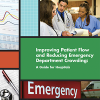National Healthcare Quality and Disparities Report
Latest available findings on quality of and access to health care
Data
- Data Infographics
- Data Visualizations
- Data Tools
- Data Innovations
- All-Payer Claims Database
- Healthcare Cost and Utilization Project (HCUP)
- Medical Expenditure Panel Survey (MEPS)
- AHRQ Quality Indicator Tools for Data Analytics
- State Snapshots
- United States Health Information Knowledgebase (USHIK)
- Data Sources Available from AHRQ
Tools
The Agency for Healthcare Research and Quality (AHRQ) offers practical, research-based tools and other resources to help a variety of health care organizations, providers, and others make care safer in all health care settings.
Hospital Guide to Reducing Medicaid Readmissions
This guide presents strategies to design and deliver transitional care to adult Medicaid patients to help reduce hospital readmissions. It provides tools and guidance on who should use them and how.
Date Published: Setting of Care: Hospital
Improving Medication Safety in High-Risk Medicare Beneficiaries Toolkit
This toolkit provides clinicians and researchers instruments, forms and tools for the ambulatory-based medication therapy management model, which focuses on medication reconciliation and assessment and resolution of drug-related problems in the Medicare population.
Date Published: Setting of Care: Ambulatory Care, Hospital
Improving Patient Flow and Reducing Hospital Emergency Department Crowding: A Guide for Hospitals
This guide presents step-by-step instructions for planning and implementing patient flow improvement strategies to ease emergency department crowding.
Date Published: Setting of Care: Hospital
Improving Your Laboratory Testing Process: A Step-by-Step Guide for Rapid-Cycle Patient Safety and Quality Improvement
The Improving Your Office Lab Testing Process Ambulatory Toolkit increases the reliability of the lab testing process within a medical office with step-by-step guidance. Includes checklists and materials to help communicate with patients
Date Published: Setting of Care: Ambulatory Care, Hospital
Medications at Transitions and Clinical Handoffs (MATCH) Toolkit
The MATCH toolkit features a step-by-step guide for hospitals to improve medication reconciliation processes as patients move through the health care system.
Date Published: Setting of Care: Hospital, Long-term Care, Outpatient Surgery
National Center for Excellence in Primary Care Research Tools and Resources
AHRQ’s National Center for Excellence in Primary Care Research provides tools and resources to improve the quality and safety of primary care. These resources, developed in collaboration with primary care experts, help to inform the design and evaluations of primary care research; assist decisionmakers implement strategies for primary care transformation; and support clinicians’ efforts to enhance delivery by improving teamwork and care processes.
Date Published: Setting of Care: Ambulatory Care, Hospital
Nursing Home Antimicrobial Stewardship Guide
This guide provides toolkits to help nursing homes optimize their use of antibiotics.
Date Published: Setting of Care: Long-term Care
On-Time Preventable Hospital and Emergency Department Visits
The Agency for Healthcare Research and Quality (AHRQ) created On-Time Preventable Hospital and Emergency Department Visits to help nursing homes with electronic medical records identify residents at risk for events that could lead to a hospital visit.
Date Published: Setting of Care: Long-term Care
On-Time Pressure Ulcer Healing
This toolkit was developed to provide nursing homes that have an electronic medical records system with tools to effectively monitor and manage pressure ulcers. Clinical reports provide information about the number and types of pressure ulcers that residents have developed.
Date Published: Setting of Care: Long-term Care
On-Time Pressure Ulcer Prevention
The Agency for Healthcare Research and Quality (AHRQ) created On-Time Pressure Ulcer Prevention to help nursing homes with electronic medical records reduce the occurrence of in-house pressure ulcers. Pressure ulcers remain a serious problem in nursing homes despite regulatory and market approaches to encourage prevention and treatment.
Date Published: Setting of Care: Long-term Care
















